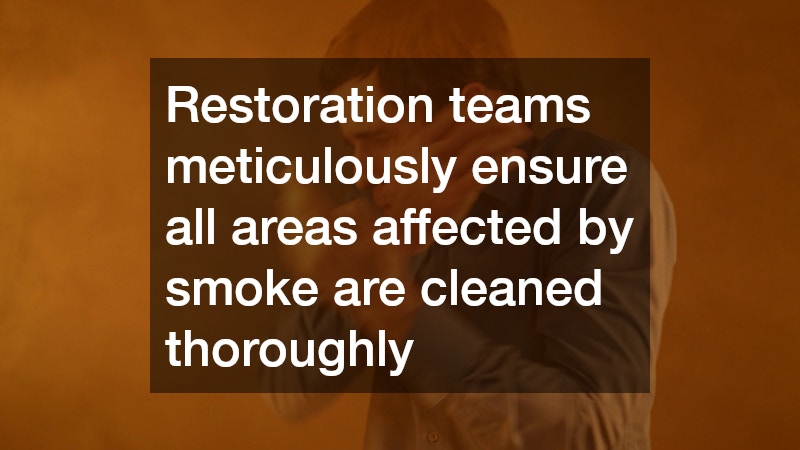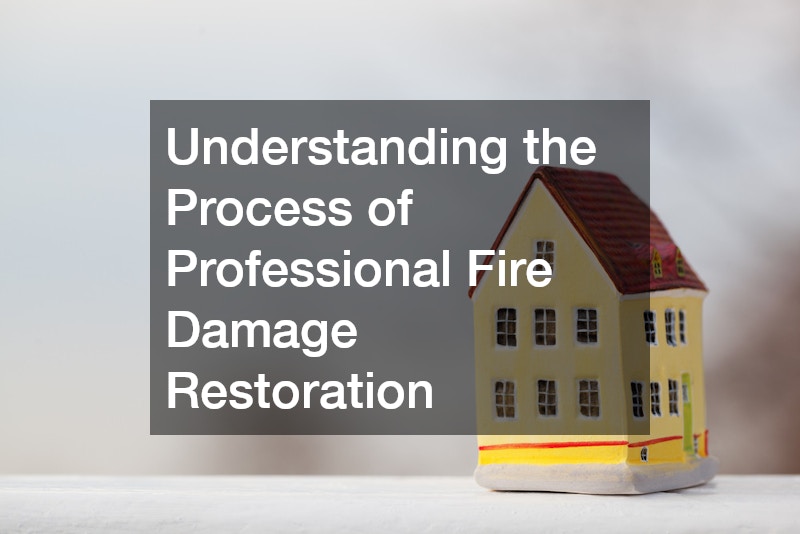It can be helpful for homeowners to explore the intricate process of professional fire damage restoration and cultivate an understanding of the techniques used, the challenges faced, and the expertise required to restore properties affected by fire. Understanding this process is crucial for homeowners and property managers alike.
Initial Steps in Fire Damage Restoration
The first step in fire damage restoration begins immediately after emergency services have extinguished the fire. Restoration professionals conduct a site assessment to identify safety hazards and determine the extent of the damage.
Securing the can prevent further risks, such as accidental collapse or exposure to toxic materials.
Emergency services often create a safe perimeter around the property, allowing restoration teams to enter with minimal risks. A thorough inspection usually involves assessing structural integrity and noting areas that require immediate attention. This initial assessment is crucial in developing a strategic restoration plan.
Furthermore, the use of protective equipment is essential during this phase. Fire-damaged properties can harbor a range of hazardous conditions, including smoke inhalation risks and exposure to chemical residues. Proper training and safety measures are integral to protecting the restoration team and ensuring that the restoration process can proceed safely and effectively.
How Fire Damage Is Assessed by Professionals
Once the site is secured, restoration experts begin the process of assessing fire damage systematically. They employ specialized tools and techniques to evaluate not only visible damage but also hidden issues that could compromise property integrity. This kind of comprehensive evaluation requires a keen eye for detail and extensive training.
Assessment typically involves checking thermal images to uncover areas affected by heat and evaluating the damage to not just visible surfaces but also underlying structures. Electronics and personal belongings are also assessed for potential salvage or repair; this is where professional expertise becomes invaluable. Restoration professionals will document their findings meticulously for insurance claims and restoration planning.
Additionally, technicians often categorize the damage as either minor, moderate, or severe. This classification allows the team to prioritize their restoration efforts and allocate resources effectively. By understanding the scope of the damage, the restoration professionals can devise a strategic plan that addresses all aspects of recovery.
Techniques Used for Smoke and Soot Removal
Smoke and soot removal is an essential component of fire damage restoration. Professionals utilize various cleaning methods depending on the type of surface being treated. Techniques range from dry cleaning to wet cleaning methods, each tailored to minimize damage while effectively removing toxins.
For porous materials, specialists often use a combination of chemical solvents and mechanical agitation to lift soot particles from surfaces. This requires a deep understanding of materials and what cleaning methods are best suited to different environments. Restoration experts also use specialized equipment such as air scrubbers and HEPA vacuums to enhance the cleaning process.
Moreover, it is crucial not to overlook the hidden places where soot can settle. Smoke has a tendency to permeate into walls, ceilings, and furniture. Restoration teams meticulously ensure all areas affected by smoke are cleaned thoroughly, often employing techniques like ozone treatment or fogging to neutralize persistent odors from soot and smoke.
Structural Repairs After a Fire
After assessing the damage, structural repairs represent a significant phase in the fire restoration process. Understanding building codes and safety regulations is imperative as restoration professionals plan and execute repairs. This phase is crucial to ensuring that the property can withstand future events.
Technicians may need to replace severely damaged timbers, repair or replace roofing and siding, and address any structural compromises identified in the assessment phase. Meticulous planning is essential to outline a sequential approach that incorporates safety measures, structural integrity, and aesthetic restoration.
In some cases, structural repairs may require collaboration with architects or structural engineers, especially for older buildings with unique design considerations. By engaging industry experts, restoration professionals can ensure compliance with current codes and standards, thereby safeguarding property owners’ investments.
Odor Removal and Fire Damage Restoration
Odor removal is often an overlooked aspect of fire damage restoration, but it is crucial for achieving a thorough recovery. The distinctive smell associated with smoke can linger long after visible damage has been addressed, creating uncomfortable living conditions. Effective odor removal techniques are crucial for restoring the property’s livability.
Restoration professionals utilize a range of strategies to address persistent smoke odors. Common methods include thermal fogging, which involves the use of a fog-like substance that neutralizes odor molecules effectively. Ozone generators may also come into play to eliminate odors at the molecular level, providing a comprehensive solution.
In addition, preventative measures are often incorporated to help minimize future odor issues. This may involve sealing surfaces with specialized paint or coatings designed to prevent odor absorption in the future. Understanding and addressing odor removal significantly contributes to the overall satisfaction and comfort of property owners post-restoration.
Understanding the process of professional fire damage restoration is essential for effectively managing the aftermath of a fire. By knowing what to expect, property owners can make informed decisions and work in tandem with restoration professionals to ensure a complete and thorough recovery. With the right knowledge and expertise, the restoration process can transform a damaged property back into a safe and welcoming home.



